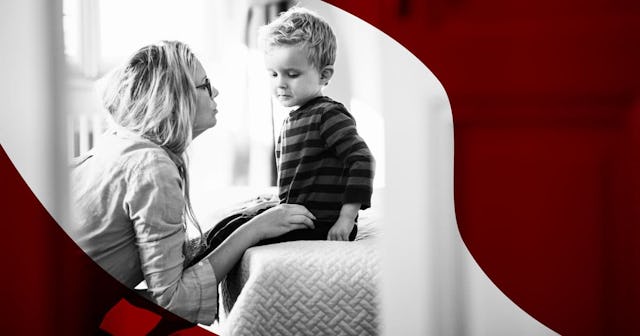‘Gaze Aversion’ Can Help Kids Process Information And Reduce Stress

When I was a kid, I was taught that making eye contact was a sign of respect. Adults, teachers, and coaches all said the same thing: Look at me when I am speaking. Looking away seemed to signal that I or my peers were not paying attention. That may be the case for some, but over time I learned that I am very good at listening while also giving my attention to something else. I was and am more efficient when I write notes or stare off into space. And when I am trying to figure something out, I look up or close my eyes.
Yet I forget that other people, particularly my kids, need to do this too. Gaze aversion or looking away isn’t always a sign of disrespect; it is an important and necessary cognitive processing strategy.
Eye contact can range from dismissive to creepy. If you are constantly avoiding someone’s eyes or making shifty work of your stare, it can trigger feelings of dishonesty, danger, or rejection in the people around you. But if you stare too long or too hard into another’s eyes, the other person may become uncomfortable and self-conscious. Eye contact is the closest we will get to reading someone’s mind, and when someone is reflecting on us, it can feel like we are being forced to do some self-reflecting too. Knowing another person is reading us, or seeing us, can be disarming.
A study showed that the average comfortable length of eye contact lasts three seconds; nine seconds was the most anyone wanted to gaze at another. This is because staring into another’s eyes creates a chemical reaction. You may feel joy, curiosity, or fear. The intimacy of eye contact can interfere with working memory and can add stress to already stressful situations.
Now think of your child or a child you teach or coach. They are constantly being asked to navigate new topics, skills, and people. They never stop learning, and are bombarded with information and feedback all day long. No wonder our kids melt down and lose their shit. They feel stress and anxiety too. This is where gaze aversion comes in handy. This happens during school, with friends, and at home.
KatarzynaBialasiewicz/Getty
Kids often look away from us, and from others, as a way to make a negative social-emotional experience more manageable. One study looked at 36 eight-year-old students. They were asked questions either face-to-face or through a live video feed. The questions ranged in difficulty and covered topics like math and verbal reasoning. Kids were more likely to look away when asked questions face-to-face, and as the questions became harder, they looked away more often. The authors of the study concluded that the function of gaze aversion is to “manage the cognitive load involved in the processing of environmental information.”
Another study concentrated on kindergartners and set out to determine if teaching students gaze aversion would help them focus. Two groups of students were asked the same questions, but one group was asked to look away from the person asking the question before answering. Researchers found that kids still naturally looked away when questions became more difficult even when not told to do so. But the group who were coached to gaze away answered all questions more accurately, specifically the more difficult questions.
These studies are great reminders for educators and coaches. Kids who look away are not uninterested or unsure; they are fine-tuning a very important skill. Not only can eye contact hinder a child’s ability to think clearly, but looking away can also allow them to avoid other distractions from peers or classroom decorations.
I admittedly get frustrated when my kids don’t listen. They may hear me, but when they don’t respond in a way that tells me they processed the information I verbally sent to them, I become impatient and irritable. I am one of those people who is more likely to make eye contact and hold someone’s gaze longer than what may make them comfortable (I blame my coaches) so when I feel like I am not being heard, I forget my own ability to do two things at once and demand that my kids look at me when I ask them a question. They usually look up from whatever they were doing and growl an irritated response that tells me they actually took in the information I said.
Sure, sometimes kids are so self-absorbed that we need to clap our hands and raise our voices to get their attention, but I need to be better about letting my kids’ eyes wander. This is especially true when I am explaining something to them, trying to discipline them, or helping them process big emotions. Their cortisol levels are already high in these situations, and their instinct to use gaze aversion is a positive attempt—not a disrespectful one—to self-regulate. And if a kid thinks they are in trouble, they can feel scared. Looking away takes away the intensity of the situation; it can help a kid feel less overwhelmed.
When something scares me, I tend to look away from it too. If someone is correcting me or trying to help me through an intense situation or feeling, the last thing I want to do is make penetrating eye contact. I am usually feeling shame or frustration or embarrassment. I look away but stay engaged. I am capable of taking in information without looking directly at the person I am interacting with. Our kids are too.
We encourage our kids to take breaks or to think before they speak or act. I will be better about coaching my kids to look away too.
This article was originally published on